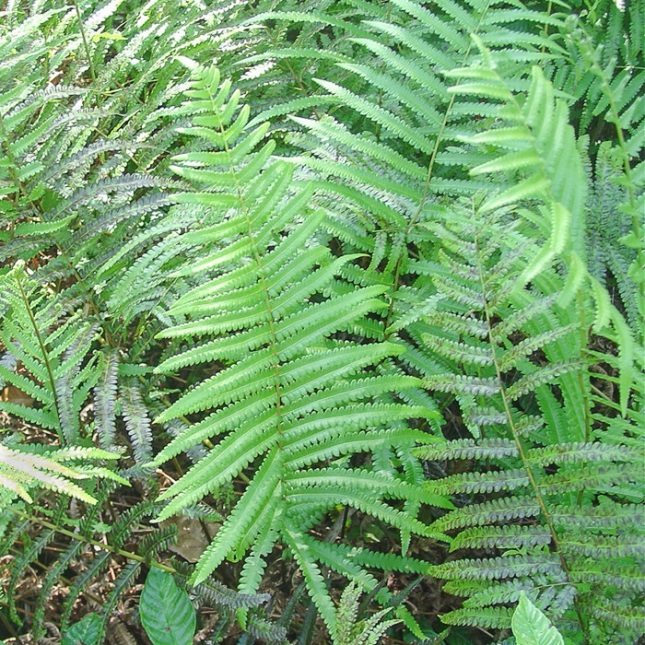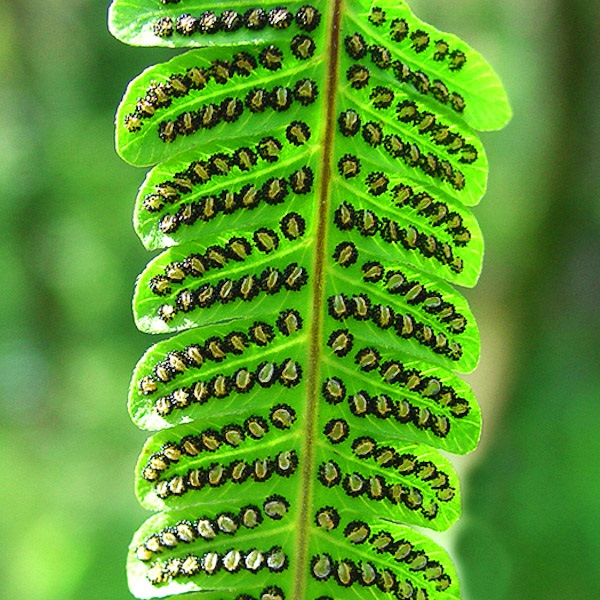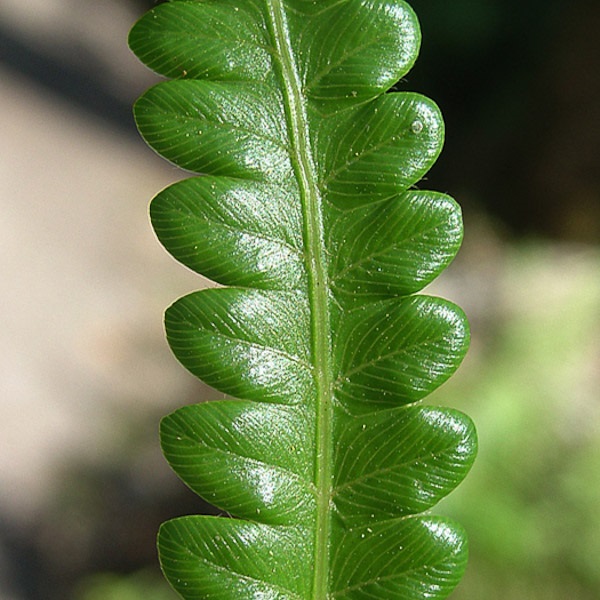Thelypteris interrupta
(Thelypteris comes from Greek for female fern. Interrupta probably refers to the “interrupted” creeping rhizome holding regularly spaced leaves.)
Thelypteridaceae

All photos by John Bradford
Today John and I devoted today to a close look at Jack in the Pulpit rising and flowering in the lengthening days, in the deepest darkest swamp we could penetrate. Having just covered that species two weeks ago, today’s spotlight shall shine on a friend of Jack’s, Hottentot Fern, locally encountered mostly in swampy realms.
Every time I see Hottentot Fern two thoughts cross my mind:
- Thought 1 is, “what an attractive fern.” Some today were as tall as a person, but usually they are about thigh-high. The fronds are a little leathery, distinctively hairless or nearly so, and with the clusters of spores cases forming a pretty embroidered stitch inside the leaf margin.
- Thought 2 is, “how in the world did a fern in a south Florida swamp wind up named Hottentot?” Hottentots are residents of arid regions in Southern Africa. I’ve got a theory, highly speculative, and based merely on hints.

The clusters of spore cases, caled sori, run around just inside the leaf margin. Each cluster has a little cover called an indusium. The individual spore cases appear as tiny black dots exposed beyond the edge of each indusium.
To solve that mystery, seeing the human name Willdenow attached to the fern is a hint. Carl Willdenow was a botanist interested long ago in plant distributions. Does our fern have an interesting distribution? Yes, thinking of it as a Florida fern is so parochial…it was discovered in India, grows in tropical Asia, inhabits the American tropics, and yes, is in African plenty, including southern Africa where Hottentots would have known it growing along streams. Ferns aren’t that common in the desert, so perhaps they know it well.

The overlapping fern and human ranges help explain the name, but did Hottentots have a special interest in our fern? It is unlikely to have medicinal importance, but look at those beautiful black spore case clusters under the leaves. Rich black spores.
Fact: Hottentots used face paints derived from diverse sources. Fact: They used fungal spores…so why not fern spores as well? May never know, but there is one experiment to try. Next week John and I will spore paint our faces and take selfies.
theshrubqueen
February 4, 2017 at 8:04 am
Informative and amusing – can’t wait to see Hottentot face painting. I recommend having some Cortisone cream nearby. Happy Weekend, George.
George Rogers
February 4, 2017 at 9:37 am
Right aboout the cortison. I’ll make John go first.
John Lampkin
February 4, 2017 at 9:23 am
Ah, George, perhaps it does indeed have medicinal qualities as a treatment for irregularity. Overdose effect would be the dreaded “Hottentot to trot.”
Oddly though, I can’t find any citations in medical texts or herbal guides.
George Rogers
February 4, 2017 at 9:39 am
Well, good to know. When lost in the swamp and feeling a bit”congested” find the fern!
Scott Sincerbeau
February 4, 2017 at 9:39 am
I look forward to your face painting!
FlowerAlley
February 4, 2017 at 2:16 pm
Please post a photo of your faces painted in spores. You are funny.
Laure Hristov
February 5, 2017 at 7:09 am
Look foward to next weeks face painting!
Uma Bhatti
February 14, 2017 at 11:19 am
I should learn more about ferns, I am not good at them
Mary Starzinski
February 16, 2017 at 3:47 pm
Great interp on that one, Dr. George! I’ll remember that always when I see this fern, or when we show it to Fl Master Naturalist students!